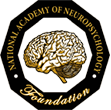Parkinson’s disease is a neurodegenerative disorder of the nervous system that impacts movement. It is the most common form of parkinsonism with the majority of Parkinson’s disease cases falling under the designation of “primary” parkinsonism, which suggests an idiopathic origin. No exact cause has been found, but it is believed that genetic mutations or exposure to certain toxins or other environmental factors may possibly be contributory. A unilateral resting tremor in one extremity is a cardinal sign that can be seen in the initial phases of the disorder, but slowness of movement and rigidity may be present as well. Anosmia (or loss of olfactory senses) may also emerge during the initial stages. Motor symptoms of the disease result from loss or death of neuronal cells that negatively impact the production and transfer or dopamine. Much of this loss occurs within the substantia nigra, a part of the basal ganglia. Risk factors include age, heredity, sex, and exposure to toxins. It estimated that there are 50-60 million cases worldwide, with the majority being male and over the age of 60. The typical life expectancy of someone diagnosed with Parkinson’s disease is 7-14 years.
Signs and Symptoms
Parkinson’s disease consists of both motor and non-motor symptoms.
Typical motor or motor-related symptoms include the following:
- Tremors (shaking)
- Hypokinesia or Bradykinesia (slowness of movement)
- Rigidity (muscle stiffness)
- Postural Instability (associated with stooped posture or balance problems)
- Micrographia (small handwriting)
- Masked Facies (reduced facial expressions)
- Autonomic Dysfunction:
- Urinary and bowel incontinence
- Orthostatic hypotension (low pressure when transitioning to a standing position)
- Swallowing problems
- Sexual dysfunction
- Digestive problems
- Blood pressure changes
- Speech changes:
- Hypophonia (softness of speech)
- Monotonic speech
Typical non-motor symptoms include the following:
- Mood Changes (increased depression or anxiety)
- Cognitive Difficulties or Slowing (bradyphrenia)
- Sleep Problems or Sleep Disorders
- Fatigue
- Pain
Diagnosing Parkinson’s Disease
Like other disorders, diagnosing Parkinson’s disease is done through data that is gathered from a number of different sources which typically include medical history, clinical interview, physical and neurological examination, and review of signs and symptoms. There is no one test that can diagnose Parkinson’s disease, but medical tests, such as blood tests, and neuroimaging can provide support of the diagnosis or rule-out other types of disorders. Another way that has helped determine the presence of Parkinson’s disease is to prescribe a trial of carbidopa levodopa, a drug to help increase the production of dopamine. If motor symptoms improve as a result of the medication, then this increases one’s confidence in a Parkinson’s disease diagnosis. Some have even suggested that patients discontinue the medication for a brief period of time to see if symptoms reemerge, and improve again when they re-start the medication.
Cognition in Parkinson’s Disease
It has been estimated that about 50% of Parkinson’s disease cases experience some degree of significant cognitive impairment. Cognitive changes can occur in the early stages of the disease. The most common deficit observed relates to executive dysfunction. Typical executive dysfunction problems include impairments in cognitive flexibility, abstract thinking, initiation of actions, motivation, or problem solving. Deficits in working memory, processing speed, and attention abilities can also be present. With respect to memory, deficient learning capabilities and poor delayed memory recall can be emerge, but memory recognition and recall with the aid of cues are usually intact. Individuals with Parkinson’s disease have an increased risk of developing dementia as compared to the general population, with age and disease duration also further increasing this risk. Mood and behavioral changes also often co-occur with cognitive changes, which include anxiety, depression, hallucinations, apathy, and poor impulse control.
Treatments for Parkinson’s Disease
There is no known cure for Parkinson’s disease at this time. As noted, carbidopa levodopa medications can alleviate symptoms. Various forms of therapy, such as speech and language, physical, occupational, recreational, and psychotherapy, can also improve one’s ability to overcompensate for symptoms and improve daily functioning. Certain therapies have been designed to specifically target symptoms associated with Parkinson’s disease. For more severe cases or when pharmacologic-treatment is ineffective, surgical interventions, such as deep brain stimulation, may then be considered. Exercise and changes to diet can also be helpful in alleviating symptoms and reduce the risk of significant decline.


